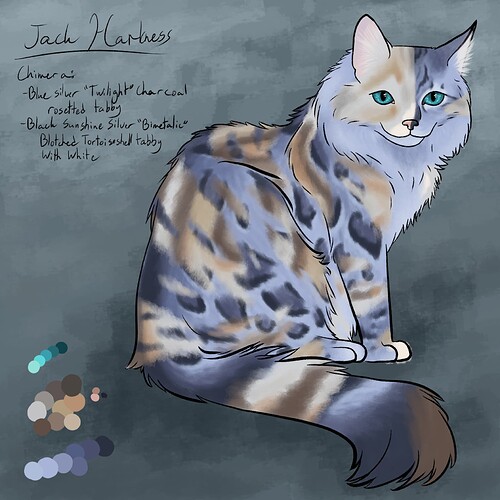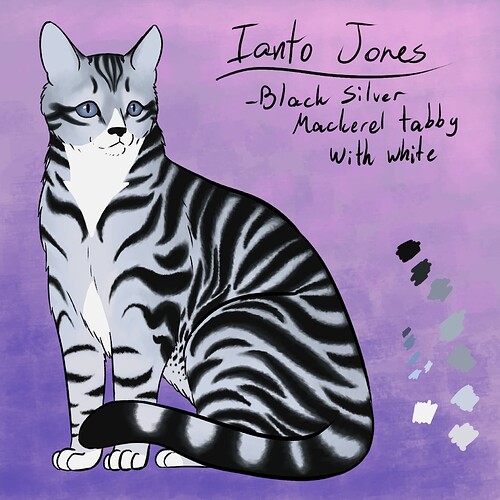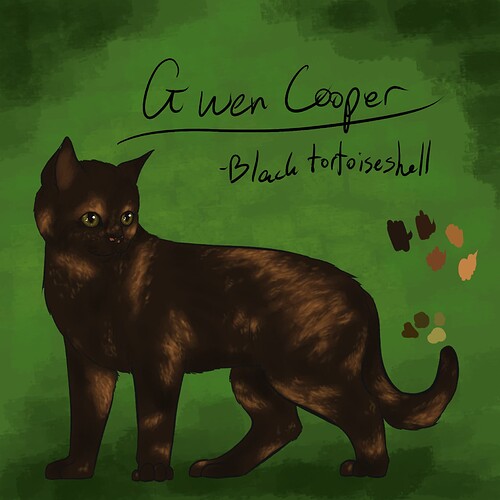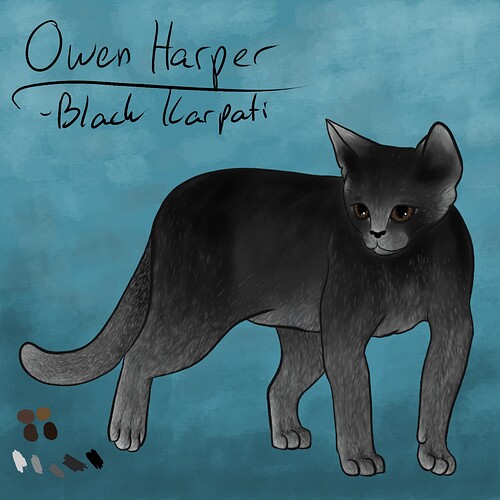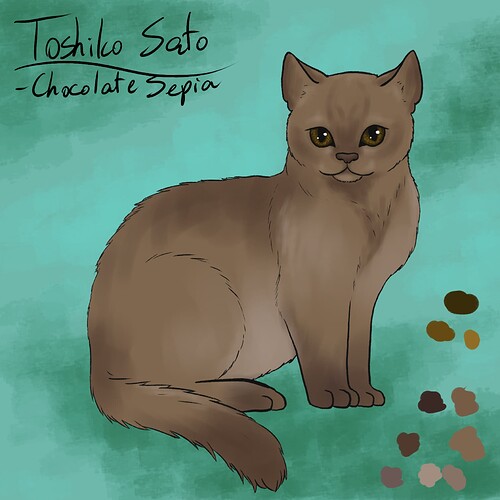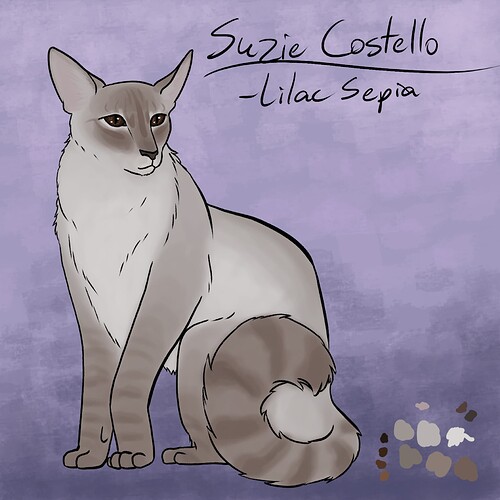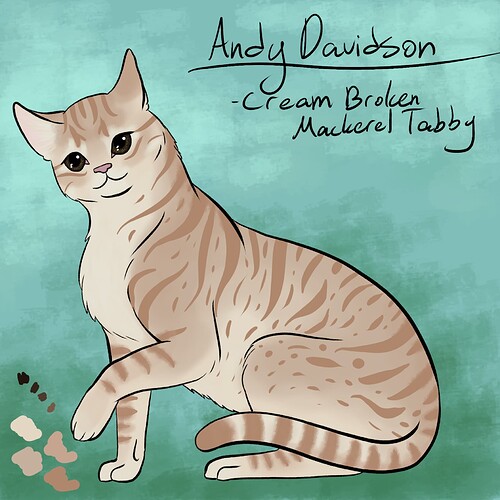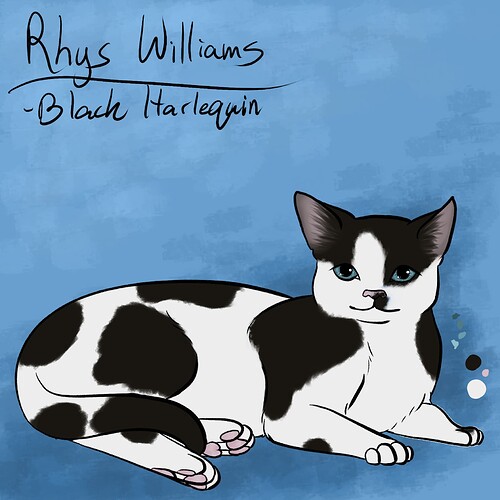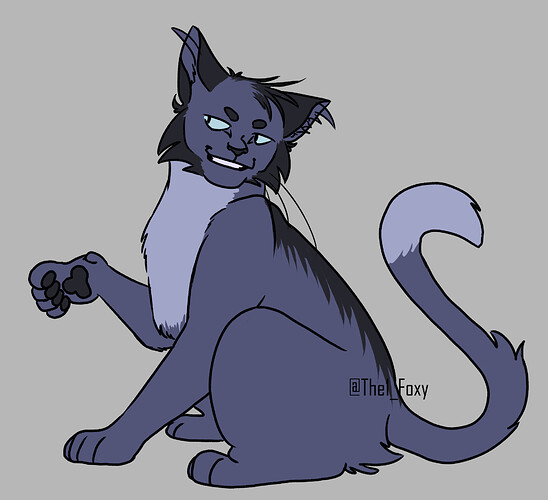I drew a bunch of Torchwood characters as cats, inspired by my special interest in cat colour genetics. Yes, these are all real possible colours for cats!
Oh these are great!
These are really beautiful!
Thank you both!
These look great! I like the touch of adding the used colours.
I love these! I see people do these and it’s always interesting to what they come up with
These look amazing! Are you a Warrior Cats fan by any chance?
I am not. I’ve heard about it but I’ve never run into any of the books as a kid and I don’t think I’m really the target audience now. I just love cats!
Just loving cats is very relatable. I think most Warrior Cats fans would agree, when I say you dodged a bullet there.
Have you ever drawn/plan on drawing any Doctors or Companions?
I’m working on a BtVS set right now, but I might eventually do Doctors and companions. I also think I’d likely open commissions for them in December, but who knows.
Cats are awesome. As I get older, I learn to appreciate them more and more. We have five cats at home, and it sometimes still feels like we don’t have enough of them!
Love these! I think the Ianto tabby is my favourite. I can really see that cat making a coffee
I thought only female cats could have the kind of markings Jack has? I don’t think much about genetics much when I make cat designs though.
This is my cat version of Jack I drew a few weeks ago
Do you want the short answer or the long answer?
Short answer, yes. Generally, multi-coloured cats (tortoiseshells*) are female. I thought it would be funny to give Jack the longest cat colour name I could think of, so I had to give him multiple colours.
Long answer:
I specifically made Jack a chimera. Chimeras are made when two embryos merge in the womb, creating a cat with a mix or genes that may or may not be possible for a single cat to express. In fact, the colours picked for jack are not possible for neither male nor female cats without chimerism: one half is blue (dilute, recessive) while the other is black (non-dilute, dominant); on half is golden while the other is not; on half is charcoal which the other is not; they even have drastically different tabby partners, rosetted (a variation of spotted) and blotched (AKA classic). Actually, even with chimerism a cat like this is close to impossible as many of these genes are currently only produced in specific breeds with no overlap. I allowed myself this discrepancy (along with allowing a cat that is clearly not a Maine Coon to be phoenix for John Hart) because Jack is from the future, and they’d probably have figured out which genes do what and how to select for them in different breeds (and possibly allow them into the stray and randombred population) by then.
While we’re on the subject, the reason the vast majority of tortoiseshell cats are female is because the colour gene is sex linked: it’s part of the X chromosome. Male cats (like humans) have one X and one Y chromosome, meaning they can only be either black or red (colloquially “orange”), not both, while female cats, with two X chromosomes, can have one red and one black, resulting in tortoiseshells. There are, however, male cats with XXY chromosomes, which can be tortoiseshells without being chimeras.
This has been your cat colour genetics lesson of the day.
(*Calico cats are tortoiseshells with white. All calicos are tortoiseshells, not all tortoiseshells are calicos, and calico is a colloquial term which isn’t really used when talking about genetics.)
Also, I love your Jack! You really got his personality across.
The long answer is much appreciated!
